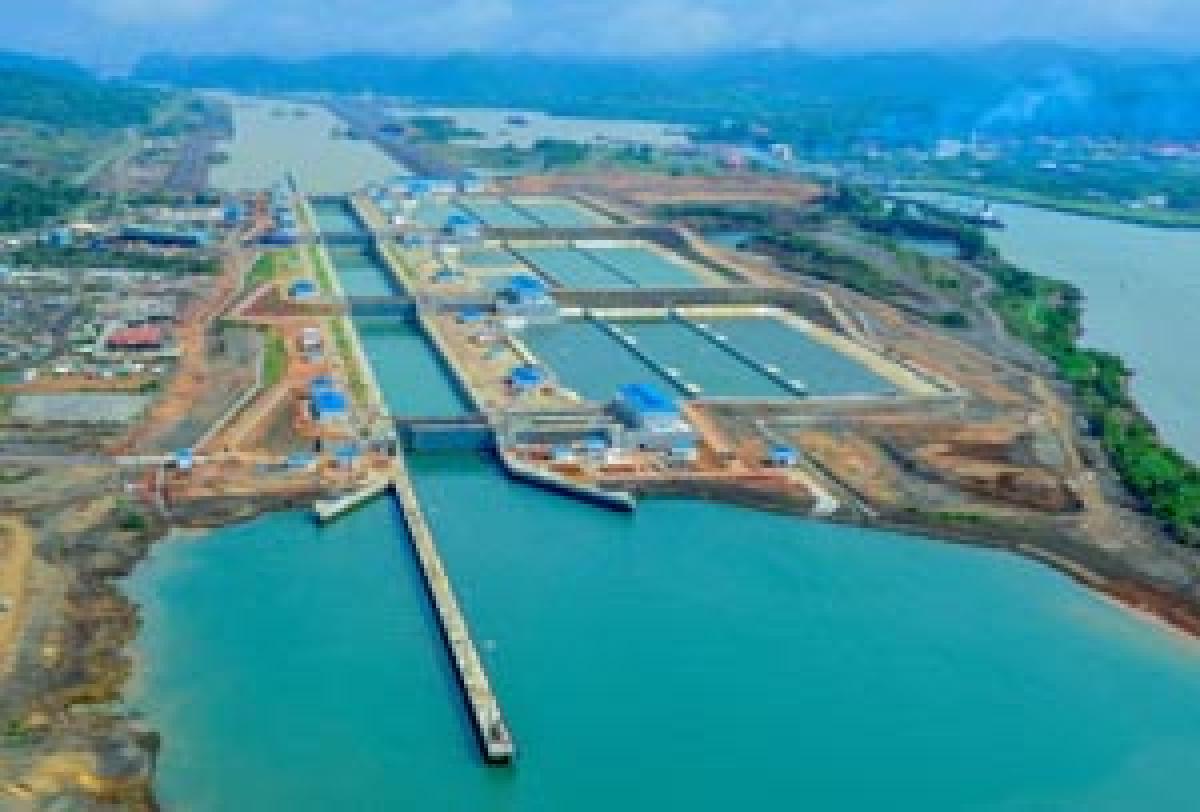Live
- ‘Rewind’ trailer launch: October 18 release
- Mahesh Babu launches ‘Maa Nanna Superhero’ trailer
- ‘Vishwam’ third single ‘Vastanu Vastanule’ released
- Varun tej’s ‘Matka’ teaser lanched
- RG Kar protest: Junior doctors to render medical services, carry out hunger strike in parallel
- Traffic Violators Counseled by Nagarkurnool Police
- Bathukamma Celebrations at Government Boys Junior College
- I Will Stand by the Mudiraj Community - MLA Dr. Rajesh Reddy
- Mission Bhagiratha DEE Hemalatha Distributes Certificates to Water Assistants in Achampet
- Elderly Man Dies Suddenly at Bus Stand
Just In

The Chinese Cosco container vessel Andronikos navigated through the Agua Clara locks during the first ceremonial pass through the newly expanded Panama Canal on June 26, 2016.
The Chinese Cosco container vessel Andronikos navigated through the Agua Clara locks during the first ceremonial pass through the newly expanded Panama Canal on June 26, 2016. Panama opened the long-delayed $6.87-billion Cdn expansion of its shipping canal amid cheering crowds, despite looming economic uncertainty in the shipping industry and a heated battle over billions in cost overruns. The new Panama Canal expansion project triples the size of ships that can travel through it.
The Panama Canal (Spanish: Canal de Panamá) is a man-made 48-mile (77 km) waterway in Panama that connects theAtlantic Ocean with the Pacific Ocean. The canal cuts across the Isthmus of Panama and is a key conduit for international maritime trade. There are locks at each end to lift ships up to Gatun Lake, an artificial lake created to reduce the amount of excavation work required for the canal, 26 metres (85 ft) above sea level.
The original locks are 33.5 metres (110 ft) wide. Athird, wider lane of locks was constructed between September 2007 and May 2016. The expanded canal began commercial operation on June 26, 2016. The new locks allow transit of larger, Post-Panamax ships, which have a greater cargo capacity than the previous locks were capable of handling.
France began work on the canal in 1881, and the United States took over it in 1904, and opened the canal on August 15, 1914. One of the largest and most difficult engineering projects ever undertaken, the Panama Canal shortcut greatly reduced the time for ships to travel between the Atlantic and Pacific Oceans, enabling them to avoid the lengthy, hazardous Cape Horn route around the southernmost tip of South America via the Drake Passage or Strait of Magellan.
The US continued to control the canal and surrounding Panama Canal Zone until the 1977 Torrijos–Carter Treaties provided for handover to Panama. The expansion will provide greater economies of scale to global commerce. It will introduce new routes, liner services, and segments such as liquefied natural gas (LNG).
Rock-bottom oil prices and China's economic slowdown has sent shipping costs plummeting. Despite the downturn, Anders Boenaes, vice president of Maersk, the largest shipping company in the world, said Panama had to expand. If it hadn't, it would have just kept losing business to other shipping routes.

© 2024 Hyderabad Media House Limited/The Hans India. All rights reserved. Powered by hocalwire.com







